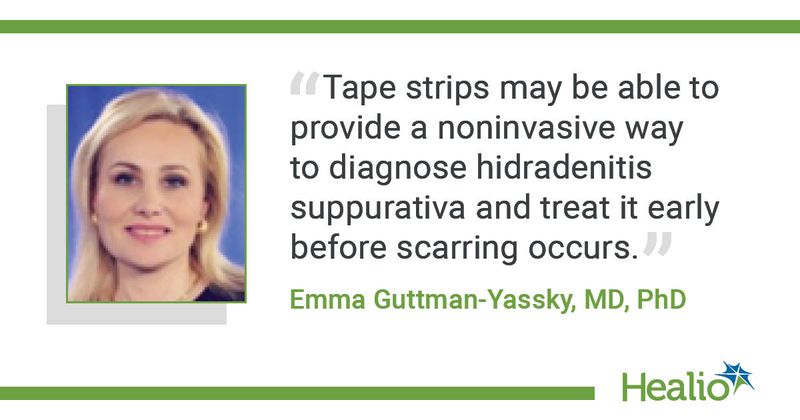Tape strips may identify hidradenitis suppurativa in lesional, nonlesional skin
Click Here to Manage Email Alerts
Key takeaways:
- Tape strips detected upregulation of known hidradenitis suppurativa biomarkers in both lesional and nonlesional skin.
- Tape strip-derived skin biomarkers also correlated with disease severity.
Tape strips show promise as a minimally invasive way to identify hidradenitis suppurativa and create individualized treatment plans for patients with this disease, according to a study.
“Tape strips can provide important clues to when and which drugs to use in [hidradenitis suppurativa (HS)] in patients with both early and late disease, which can change clinical practice,” Emma Guttman-Yassky, MD, PhD, Waldman Professor and System Chair of the Kimberly and Eric J. Waldman Department of Dermatology at Icahn School of Medicine at Mount Sinai, told Healio. “It is noninvasive and nonscarring.”

To investigate the ability of skin tape strips to detect molecular alterations in HS and
identify biomarkers of disease activity, Guttman-Yassky and colleagues performed RNA sequencing on tape strips collected from lesional and nonlesional skin of 22 patients with HS and 21 healthy controls.
Results showed that tape strips were able to detect upregulation of known HS biomarkers such as interleukin (IL)-17A in both lesional and nonlesional skin, providing clues to early disease.
Skin biomarkers derived from patients via tape strips were also correlated with the clinical disease severity of HS in lesional and nonlesional skin (P < .05). Expressed biomarkers included TNF alpha, IL-17A, IL-17F, OX40, IL-4R and Janus kinase 1 through 3.
“We were in fact surprised to see that the tape strips were able to detect key HS biomarkers such as IL-17 and TNF, with very strong correlation with clinical severity,” Guttman-Yassky said. “Tape strips may be able to provide a noninvasive way to diagnose HS and treat it early before scarring occurs.”
According to Guttman-Yassky, this approach may be useful in identifying which drug is suitable for which patient.
“We are excited about the applicability of this study to early treatment and for serially following HS patients treated with drugs targeting specific immune molecules and pathways,” she concluded.
